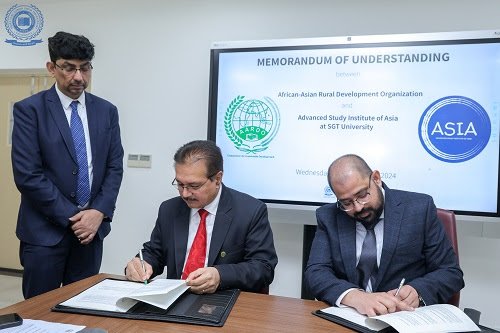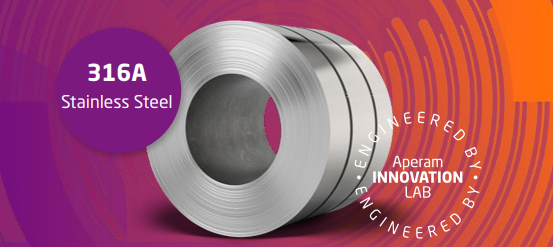Role of stainless steel in fight against lead poisoning

SGT University’s Advanced Study Institute of Asia (ASIA) has partnered with the African-Asian Rural Development Organisation (AARDO) to fight lead poisoning. We explore the role of stainless steel as an effective material that helps curb the impact of lead in the healthcare sector.
In a recent development, SGT University’s Advanced Study Institute of Asia (ASIA) has partnered with the African-Asian Rural Development Organisation (AARDO) to combat lead poisoning in rural communities across Africa and Asia. The collaboration aims to address the health impacts of lead exposure, particularly on children and women, and its connection to poverty.
A Memorandum of Understanding (MoU) was signed by AARDO’s Secretary-General, Dr Manoj Nardeosingh, and ASIA’s Research Director, Professor Amogh Rai. The partnership seeks to drive behavioural change, knowledge dissemination and positive, long-term impacts. ASIA, founded in 2023, is dedicated to multidisciplinary research on South and Southeast Asia.
The collaboration between ASIA and AARDO marks a pivotal moment in the global effort to combat lead poisoning, especially in vulnerable populations across Africa and Asia. Lead exposure, particularly in rural areas, has devastating effects on the health and development of children, with long-term cognitive and behavioural consequences. While the focus of this partnership is on addressing the health crisis caused by lead, there are significant ways in which materials like stainless steel can play a role in mitigating the risks and providing safer alternatives in healthcare, water purification and environmental sustainability.
In the light of the above efforts to curb the ill-effects of lead on health, let’s look at the role stainless steel can play in healthcare.

Stainless steel in healthcare
One of the key areas where stainless steel plays a crucial role is in healthcare infrastructure. Stainless steel is highly resistant to corrosion and contamination, making it an ideal material for medical equipment, tools, and water distribution systems. In regions affected by lead poisoning, such as those targeted by the ASIA-AARDO partnership, the use of stainless steel in healthcare settings can ensure that harmful substances like lead do not contaminate critical medical supplies or water systems.
By promoting stainless steel in medical and community infrastructure, the partnership could help mitigate the risk of lead exposure. For example, stainless steel medical instruments ensure that children and women in these vulnerable communities are not exposed to any further toxins during their care, aligning with broader public health safety goals.
Water purification systems
Lead contamination in drinking water is one of the most significant sources of exposure, particularly in rural areas. Stainless steel is frequently used in water purification systems because it is non-corrosive, durable, and resistant to the leaching of harmful substances. As part of the ongoing efforts to tackle lead poisoning, the use of stainless steel in water filtration and purification systems could provide a simple yet effective solution to ensure access to clean and safe drinking water.
For areas where lead poisoning is prevalent, stainless steel water purification systems can help prevent further exposure. The durability of stainless steel ensures that these systems remain effective over long periods, making it an essential tool in the fight against lead contamination in water supplies.
Lead-free stainless steel alloys
Another potential connection between stainless steel and the fight against lead poisoning is the development of lead-free stainless steel alloys. As concerns about lead exposure continue to grow, the demand for lead-free products has increased, particularly in environments where vulnerable populations are at risk. Research into creating lead-free stainless steel alloys is gaining momentum, and these materials could be used in a wide range of applications, from household items to industrial tools and medical devices.
By developing and promoting lead-free stainless steel products, manufacturers could contribute to reducing the risk of lead exposure, ensuring safer living and working environments for communities at the highest risk.
Environmental sustainability
Both the fight against lead poisoning and the use of stainless steel are intrinsically linked to environmental sustainability. Stainless steel is known for its durability and recyclability, making it an eco-friendly material choice for a wide variety of applications. Its long lifespan reduces the need for frequent replacements, and its 100 per cent recyclability makes it a more sustainable alternative to other materials.
As ASIA and AARDO work together to tackle the health impacts of lead exposure, emphasising the environmental benefits of stainless steel could help advance global sustainability goals. The material’s versatility and low environmental footprint align with the broader objective of creating safer, healthier living conditions, not just by reducing toxic exposure but also by promoting sustainable infrastructure and products.










